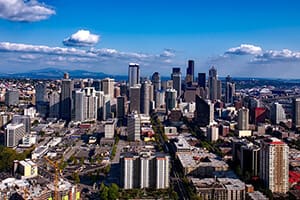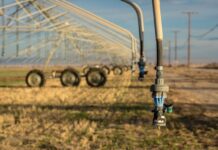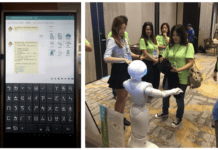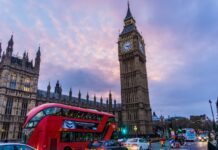

Seattle’s smart city story narrates the same characters of the limelight – collaboration, data-driven innovation, carbon reduction, environment protection and the list goes on…But, one thing that comes out of the box is the city’s perspective towards each character. Some of the leading-edge initiatives including these characters are thought-provoking!
What Makes Seattle Smart?
The City marked its move in Smart Government, Smart Economy and Smart People with higher rankings after Washington, DC since 2012. Bainbridge Graduate Institute is one of the most eminent educational centre stimulating sustainable innovation and entrepreneurship. Sustainable improvement or the resilient buildup is remarkably being encouraged by the city and Seattleites.
One of the most exceptional movements by the city for its people is the ‘Happiness Initiative’ which evaluates the height of happiness among the Seattleites – the gist of a smart city development. Besides, 1,000 open data sets and still exceeding, support the growth of startups with the quality of being transparent and comprehensive. This is one of the many reasons that makes Seattle best entrepreneurial hub among the North American cities. Acting as a magnet for entrepreneurial talent, in 2012, the Global Startup Ecosystem Index placed Seattle’s Entrepreneurial ecosystem at the fourth position in world rankings.
A Case Study Showcasing Environmental Initiatives
From the beginning of the 21st century, Seattle has paid significant efforts in reducing greenhouse gas emissions. The vision of carbon neutrality has set off a huge network of initiatives on the mission that would make Seattle more sustainable and resilient.
To reduce emissions, the City of Seattle targeted vehicles, buildings, landfills, streetlights and traffic signals after analysing its own carbon footprint.
Since 2005, City switched to use of high-efficiency vehicles like the electric cars (Seattle is the leading city in transportation electrification) and the hybrid electric vehicles which resulted in 16% decrease in gasoline consumption by the City departments. Further, it diverted its focus towards carpool and encouraged the use of efficient vehicles as far as possible.
Seattle realised that maximum emissions were given out from the 6 city landfills (now closed) due to the release of methane from the waste decomposition. The landfills were stopped from dumping more waste – this means that there was no further increase in methane emissions and as the degradation process subsided, the amount of methane emission declined. Estimated from 2005, a significant 75% decrease was reported.
Electricity and natural gas consumption (for heating, cooling, and lighting purpose) in buildings is yet another crucial matter that accelerates greenhouse gas emissions. As a matter of fact, building emissions had increased from 15,000 to 18,000 tons of carbon dioxide (corresponding to 18%). The analysis reveals from 2005 to 2009 a drop in emissions was seen. City council is finding out innovative ways to improve building efficiency considerably (discussed below).
There are 84,000 streetlights and 1,000 traffic signals in Seattle that accounted for 2,300 tons of carbon dioxide before 2005. But after 2005, the use of lower-emission electricity sources lead to 50% reduction (1,200 tons). Later in 2010, the city replaced 5,000 high-pressure sodium lights with advanced LED lights which added to remarkable reduction.
Rainwatch – The Innovation Of Seattle
Seattle has faced heavy rains and storms in the past which left the city life completely stranded. With no movement of vehicles, schools closed, streets flooding and sewers overflowing, Seattle came up with an innovative initiative to help the city conquer the challenge.
A smart collaboration emerged as the platform of innovation which was named as ‘Rainwatch’ – a tool that predicts rain occurrence before time and helps the city get ready for it.
The Seattle Rainwatch initiative is an emergency management and climatology tool that alerts all the government departments from public works to transportation to control the situation proactively.
The tool Rainwatch is deployed by the city in examining what percentage of rain is accumulating in a specific location and where the storm is heading to with the use of rainfall data. The grounded network of sensors assists in forming a rain-gauge data. The Rainwatch calibrates the rainfall rates with rain-gauge data by converting the radar imagery data to rainfall rates.
With Rainwatch, Seattle has become more resilient. The predictive tool lets Seattle drain out the pipelines before the rainfall. It also helps the public to be watchful before heavy rains hit the city. Or, there may be instances when a construction work could be saved from hailstorms and heavy rains through the resilient Rainwatch.
In a recent interview with American City and County, Chief technology officer of Seattle, Michael MattMiller said that Rainwatch comes under the success stories of best technology implemented in Seattle from an innovative perspective as it can create “hyper-local weather predictions.” It is the dominant part of City’s climate change adaptation and resiliency planning.
Dream – District 2030


The Seattle District 2030 will be a highly efficient district space that will be used for the construction of high-performance buildings reducing the environmental impact during and after constructions. Education and collaboration across every public-private sector will form the base of the initiative.
Architecture 2030 Challenge Planning aims at providing pragmatic, discernible and innovative strategies to help district property managers, owners and tenants achieve goals producing a decreased impact on the environment due to construction-related operations. The targeted focus is on both new and existing medium and large sized buildings under private ownership. The implementations deployed on the buildings will help other cities decrease their carbon footprint using the Seattle strategy. Each building independently will have the resource reign in their hands while the district-wide approach will generate efficient resource cycle considering heat recovery and reduction in resource consumption.
Through 2030 district the people involved in the project will be able to amplify potential gains by availing the current market resources which will help them construct, manage and own the high-performance buildings. District 2030 will assist members in paving the way to new partnerships and creating new tools to serve the need.
Following is the goal of District 2030 described precisely:
Goal for existing buildings:
- The efficient energy consumption of buildings is set to minimum 20% by 2020 with the percentage elevating to 50% by 2030
- The stormwater peak discharge and potable water management inside the district will reach 20% by 2020, 35% by 2025 and 50% by 2030
- Carbon dioxide emitted by heavy motor vehicles will be reduced to 20% by 2020 and extending to 50% by 2030
Goal for new construction:
- Within the commencement period, 70% energy efficiency will be attained with the target reaching carbon neutrality by 2030
- The stormwater peak discharge and potable water will be jointly managed and promptly reach a 50% efficiency
- Carbon emissions from heavy vehicles will witness 50% reduction below the current district average
This initiative is regarded as the key component representing collaborative strategies and a massive investment in Seattle’s vision of carbon neutrality by 2030.



































